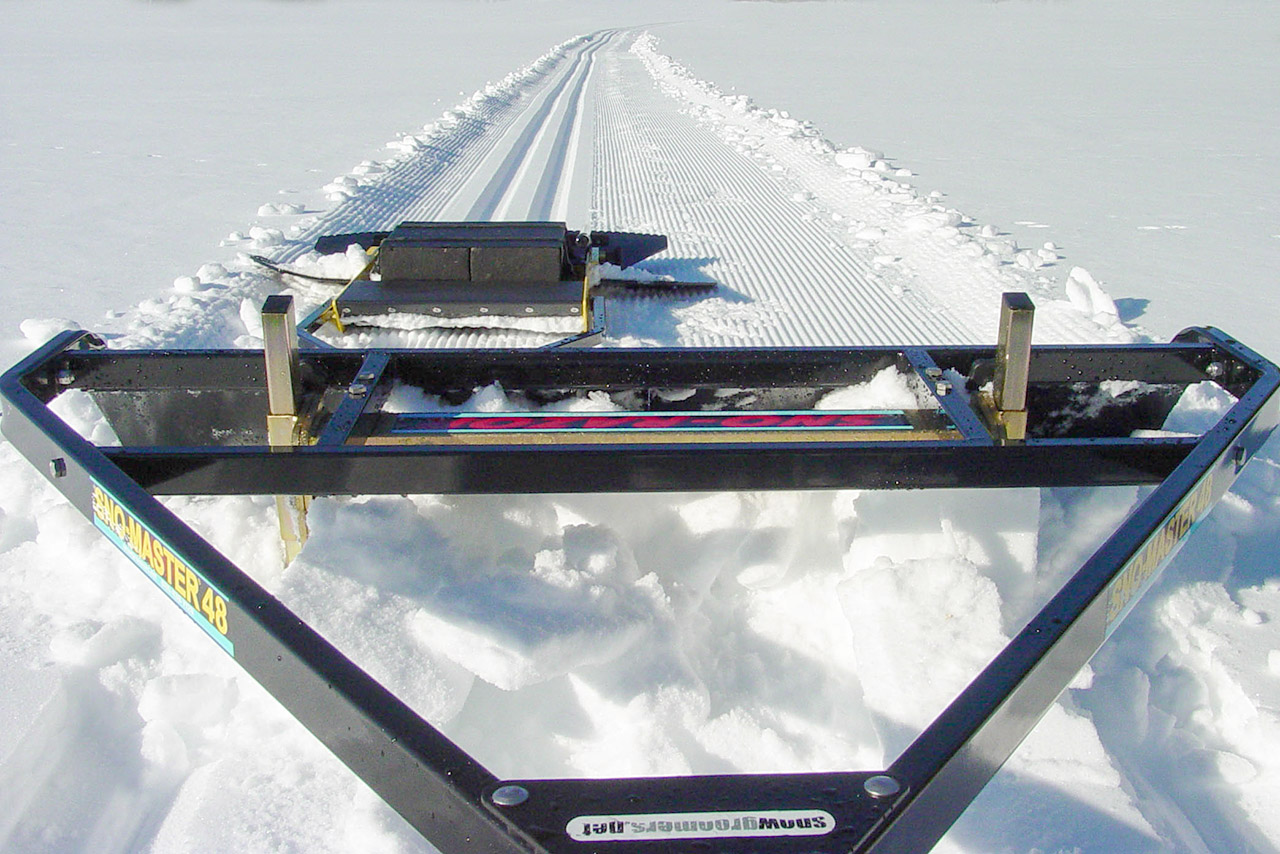Home>Misc>Featured>How To Do Interval Training During Winter


Featured
How To Do Interval Training During Winter
Modified: August 21, 2023
Learn how to stay active during the winter with featured interval training exercises. Enhance your fitness routine and stay motivated despite the cold weather.
Introduction
When the winter season arrives, it can be tempting to abandon your regular exercise routine and hibernate indoors. However, with the right approach, you can continue to stay active and even take your fitness to new heights during the winter months. One effective and engaging method of exercise is interval training.
Interval training is a form of workout that involves alternating periods of high-intensity exercise with periods of rest or lower intensity. It has gained popularity in recent years due to its numerous benefits, such as improving cardiovascular fitness, increasing calorie burn, and enhancing endurance.
During winter, interval training becomes even more appealing as it allows you to maximize your workout in a shorter time frame, making it ideal for those who have limited daylight hours or prefer indoor training. Additionally, the high-intensity bursts can help you generate more body heat, keeping you warm and motivated through the colder temperatures.
While the winter weather may present certain challenges, such as icy roads or biting winds, you can still reap the benefits of interval training by adapting your routine and making smart choices. This article will guide you through the process of doing interval training during the winter season, from understanding winter weather conditions to designing an effective training plan and ensuring your safety throughout.
So, if you’re ready to embrace the winter season and challenge yourself with invigorating workouts, let’s dive into the world of interval training and discover how to make the most of it during the colder months.
Benefits of Interval Training
Interval training offers a multitude of benefits that make it a highly effective and efficient exercise strategy, regardless of the season. Here are some key advantages of incorporating interval training into your fitness routine:
- Increased calorie burn: Interval training has been shown to boost your metabolism, leading to a greater calorie burn both during and after your workout. The intense bursts of activity followed by short recovery periods create an “afterburn” effect, where your body continues to burn calories at an elevated rate even after you’ve finished exercising.
- Improved cardiovascular fitness: The intense nature of interval training challenges your cardiovascular system and helps improve your heart health. It increases your heart rate, improves blood circulation and oxygen delivery, and enhances the efficiency of your cardiovascular system.
- Enhanced endurance: Regular interval training can greatly improve your stamina and endurance levels. By pushing your body to its limits during the high-intensity intervals, you gradually increase your body’s capacity to sustain efforts over a longer duration.
- Time efficiency: One of the biggest advantages of interval training is that it allows you to accomplish more in less time. Since the workout consists of alternating high-intensity and recovery periods, you can complete a challenging and effective workout in a shorter duration compared to traditional steady-state cardio exercises.
- Muscle strength and tone: Interval training not only burns calories but also helps build and tone your muscles. The intense bursts of activity engage various muscle groups, promoting muscle development and overall strength.
- Increased workout variety: Interval training offers endless possibilities for workout variations and combinations. You can incorporate different exercises, equipment, and interval durations to keep your workouts interesting and challenging, preventing boredom and plateaus.
These benefits of interval training apply throughout the year, including the winter season. By understanding the advantages of this exercise method, you can stay motivated and make the most of your interval training workouts, regardless of the weather conditions outside.
Understanding Winter Weather Conditions
When it comes to interval training during winter, understanding the weather conditions is crucial for ensuring your safety and optimizing your workouts. Here are some key factors to consider:
- Temperature: The cold temperatures of winter can affect your body’s ability to stay warm during exercise. Pay attention to the temperature and adjust your clothing accordingly, making sure to layer up to keep your body insulated. Start your workout with light layers that can be easily removed as you warm up.
- Wind chill: Keep in mind that the wind can make the temperature feel even colder, particularly when exercising outdoors. Check the wind chill factor before heading out and consider altering your workout location or time if it’s too extreme.
- Precipitation: Rain, snow, and ice present additional challenges for outdoor interval training. Slippery surfaces can increase the risk of injuries, so choose your training locations wisely. If conditions are unsafe, it’s best to opt for indoor workouts instead.
- Daylight hours: During winter, the daylight hours are shorter, meaning you may find yourself training in low-light or dark conditions. Take necessary precautions by dressing in bright or reflective clothing and using headlamps or other visibility aids to ensure you’re seen by motorists and other pedestrians.
In addition to these weather factors, it’s important to listen to your body and be aware of any symptoms of cold-related injuries, such as frostbite or hypothermia. If you experience numbness, tingling, pain, or extreme fatigue, it’s crucial to seek shelter and warmth immediately.
By understanding and taking the necessary precautions for the winter weather conditions, you can participate in safe and enjoyable interval training sessions, whether indoors or outdoors. Remember, your well-being should always be the top priority when engaging in any physical activity.
Choosing the Right Training Equipment
When it comes to interval training during winter, having the right equipment is essential for a safe and effective workout. Here are some considerations when choosing your training equipment:
- Footwear: Invest in a good pair of winter-specific athletic shoes or trail running shoes that provide traction and stability on icy or slippery surfaces. Look for shoes with a well-cushioned sole and adequate ankle support to reduce the risk of slips and falls.
- Clothing: Dressing appropriately for the colder temperatures is key to staying comfortable during your workouts. Opt for moisture-wicking base layers to keep you dry and insulated. Layer up with insulating mid-layers and top it off with a wind-resistant and waterproof outer shell to protect you from the elements.
- Gloves and hat: Keep your extremities warm by wearing thermal gloves or mittens and a hat. These accessories are crucial for maintaining body heat and protecting your hands and head from the cold.
- Safety accessories: Consider using safety accessories such as traction cleats or spikes for your shoes to provide added grip and reduce the risk of slipping on icy surfaces. Reflective gear or lights can also enhance your visibility during low-light conditions.
- Indoor training options: If outdoor conditions are too harsh or unsafe, consider utilizing indoor training options. This can include using a treadmill, stationary bike, or indoor track, which provide a controlled environment for your interval training sessions.
Remember, the right equipment not only helps you stay safe but also enhances your overall training experience. Prioritize functionality, comfort, and protection when choosing your interval training gear for the winter season.
Preparing Your Body for Interval Training
Before diving into intense interval training sessions during winter, it’s important to properly prepare your body to minimize the risk of injury and optimize your performance. Here are some tips to get your body ready:
- Warm-up: Start each training session with a thorough warm-up to increase blood flow to your muscles and loosen up your joints. Incorporate dynamic stretches, such as leg swings, arm circles, and high knees, to gradually elevate your heart rate and improve flexibility.
- Strength and flexibility exercises: Include strength and flexibility exercises in your warm-up routine to activate your muscles and improve their range of motion. Perform exercises like lunges, squats, push-ups, and shoulder circles to target major muscle groups and enhance overall stability.
- Core activation: Engage your core muscles throughout your warm-up and training session to enhance stability and support proper posture. Strong core muscles help maintain balance and reduce the risk of injury during high-intensity movements.
- Hydration: Proper hydration is important regardless of the season. Even though you may not feel as thirsty in colder temperatures, your body still needs an adequate amount of fluids to perform at its best. Drink water before, during, and after your workouts to stay hydrated.
- Proper nutrition: Fuel your body with nutritious foods that provide the energy you need to sustain intense interval training sessions. Consume a balanced meal or snack containing carbohydrates, proteins, and healthy fats at least 1-2 hours before your workout.
- Rest and recovery: Don’t overlook the importance of rest and recovery in your training program. Allow your body enough time to recover between interval sessions to prevent overexertion and reduce the risk of injury. Aim for at least one or two days of rest each week.
By following these pre-training preparations, you can ensure that your body is primed and ready for the challenges of interval training during winter. Take the time to properly warm up, strengthen your muscles, stay hydrated, and prioritize rest, and you’ll be on your way to a successful and injury-free workout session.
Designing an Interval Training Plan for Winter
When it comes to interval training during winter, having a well-designed plan is essential to keep you motivated and make the most of your workouts. Here are some steps to help you create an effective interval training plan for the winter season:
- Set clear goals: Determine what you want to achieve through your interval training sessions. Whether it’s improving endurance, increasing speed, or losing weight, having specific goals will guide your training and keep you focused.
- Choose your intervals: Decide on the length and intensity of your intervals. You can opt for short bursts of high-intensity exercise followed by active recovery periods or longer intervals with progressively increasing intensity. Experiment with different interval durations to find what works best for you.
- Select exercises: Select a range of exercises that target various muscle groups and incorporate a mix of cardio and strength-based movements. This variety will keep your workouts challenging and engaging. Consider exercises such as sprints, burpees, jump squats, mountain climbers, or kettlebell swings.
- Determine the duration: Decide on the overall duration of your interval training session. This can vary depending on your fitness level and time availability. Start with shorter sessions and gradually increase the duration as your fitness improves.
- Plan your recovery periods: Allocate appropriate recovery periods between intervals to allow your body to recuperate. Active recovery, such as jogging or walking, can keep your heart rate elevated while still giving you some relief. Listen to your body and adjust the duration and intensity of these recovery periods as needed.
- Schedule your sessions: Determine how many interval training sessions you can realistically fit into your week and assign specific days and times for each session. Consistency is key, so aim for at least two to three sessions per week and stick to your schedule as much as possible.
- Track your progress: Keep a record of your interval training sessions, including the exercises performed, duration, and intensity. This will help you track your progress over time and make adjustments to your plan as needed. Utilize fitness apps or wearable devices to monitor your heart rate, calories burned, and distance covered.
Remember, designing an interval training plan requires flexibility and adaptation. Listen to your body, make adjustments when necessary, and don’t be afraid to challenge yourself with new exercises or increased intensity as you progress.
By creating a well-structured interval training plan that aligns with your goals and preferences, you’ll be able to navigate the winter months with purpose and stay motivated in achieving your fitness objectives.
Safety Tips for Interval Training in Winter
Interval training during winter can provide an invigorating and effective workout experience, but it’s important to prioritize safety to prevent injuries and ensure a positive training experience. Here are some essential safety tips for interval training in winter:
- Check weather conditions: Before heading out for your workout, check the weather forecast to ensure that conditions are safe for outdoor training. Avoid exercising in extremely cold temperatures, heavy snowstorms, or icy conditions.
- Layer up: Dress in layers to protect yourself from the cold and adjust your clothing according to your body temperature during exercise. Wearing moisture-wicking fabrics as the base layer can help keep you dry and insulated.
- Protect your extremities: Keep your extremities warm by wearing gloves or mittens, and a hat or headband to prevent heat loss from your head. Don’t forget to wear warm socks and appropriate footwear.
- Stay visible: If you’re training outdoors during low-light conditions, wear reflective clothing or accessories and use lights or headlamps to ensure visibility to drivers and other pedestrians.
- Warm up properly: Start each session with a thorough warm-up to prepare your muscles and joints for intense activity. Include dynamic stretches and mobility exercises to increase blood flow and flexibility.
- Choose safe training locations: Be mindful of your surroundings and choose well-lit areas with clear pathways. Avoid areas with slippery or icy surfaces that could increase the risk of slips and falls.
- Hydrate adequately: Even though you may not feel as thirsty in colder weather, it’s important to stay hydrated. Drink water before, during, and after your workouts to maintain optimal performance.
- Listen to your body: Pay attention to any signs of discomfort, pain, or fatigue during your workouts. If you experience extreme coldness, numbness, dizziness, or chest pain, stop exercising and seek shelter immediately.
- Modify your workouts if necessary: Adapt your interval training sessions based on the weather conditions and your comfort level. If outdoor conditions are unsafe, consider indoor alternatives such as utilizing a treadmill or indoor track.
- Be mindful of ice: Be cautious of icy patches, especially when running or jumping. Slow down your pace and be aware of your footing to avoid slipping and injury.
By following these safety tips and using common sense, you can enjoy the benefits of interval training while minimizing the risk of accidents or injuries. Prioritize your well-being and take the necessary precautions to ensure a safe and effective training experience during the winter season.
Adjusting Your Training Intensity and Duration
When it comes to interval training during winter, it’s important to be flexible and make adjustments to your training intensity and duration based on the weather conditions and your personal fitness level. Here are some guidelines to help you optimize your workouts:
- Listen to your body: Pay attention to how your body is responding to the intensity and duration of your interval training sessions. If you feel fatigued or experience any discomfort or pain, it’s important to scale back or take a rest day to allow for proper recovery.
- Account for temperature and weather: Keep in mind that colder temperatures can impact your performance and increase the risk of injury. Adjust your intensity accordingly, and consider shortening your workout duration if conditions are extreme.
- Gradually increase intensity: If you’re new to interval training or haven’t been training consistently, start with lower-intensity intervals and gradually increase the intensity over time. This allows your body to adapt and reduces the risk of overexertion or injury.
- Modify intervals for outdoor training: If you’re training outdoors and dealing with harsh winter conditions, you may need to modify your intervals to account for factors like slippery surfaces or limited visibility. Slow down your pace, shorten your intervals, or adjust the intensity to ensure safety.
- Consider indoor alternatives: If outdoor conditions are unfavorable or unsafe, don’t hesitate to switch to indoor training options, such as utilizing a gym, fitness studio, or your own home. Indoor equipment like treadmills or stationary bikes can still provide an effective interval training workout.
- Recover properly: Allow for adequate recovery between interval sessions. This may mean extending your recovery periods or scheduling additional rest days to prevent overtraining and promote muscle repair and growth.
- Monitor your progress: Keep track of your training sessions, noting the intensity, duration, and any adjustments made. Regularly review your progress to identify trends and make informed decisions about increasing or decreasing your training intensity and duration.
- Seek guidance if needed: If you’re unsure about how to adjust your training intensity and duration during the winter season, consider consulting with a fitness professional or trainer. They can provide personalized guidance and ensure you’re making the right adjustments for your goals and abilities.
Remember, every individual is unique, and what works for one person may not work for another. Pay attention to your body, be mindful of the winter conditions, and make adjustments to your training to ensure a safe, effective, and enjoyable interval training experience.
Incorporating Variety in Your Interval Training
Keeping your interval training sessions fresh and exciting is key to staying motivated and avoiding workout plateaus. Here are some tips to help you incorporate variety into your winter interval training routine:
- Change up the exercises: Include a variety of exercises in your interval training sessions to target different muscle groups and prevent boredom. Mix in bodyweight exercises, cardio exercises, and strength-based movements to keep your workouts challenging.
- Try different intervals: Experiment with different interval durations and intensities to work different energy systems in your body. Incorporate longer intervals for endurance training, shorter intervals for high-intensity bursts, or mixed intervals for a combination of both.
- Utilize different equipment: Take advantage of the various training equipment available to add variety to your workouts. Incorporate equipment such as resistance bands, kettlebells, medicine balls, or battle ropes to target muscles in different ways and add intensity to your intervals.
- Explore outdoor terrain: If you prefer outdoor training, take advantage of different terrains available to you. Find parks, trails, or hills that you can incorporate into your interval training sessions. Running on uneven surfaces or uphill can challenge your muscles and engage different muscle fibers.
- Join a group or class: Participating in group interval training classes or finding a training partner can add an element of fun and motivation. Surrounding yourself with like-minded individuals can push you to challenge yourself and try new exercises.
- Incorporate interval games: Use interval games or challenges to make your workouts more engaging. For example, you can create a circuit where you perform different exercises at different stations for a set period of time. Challenge yourself to complete as many rounds as possible within a specific duration.
- Switch up timing and structure: Alternating the timing and structure of your intervals can help keep your body guessing and avoid adaptation. For example, you can try pyramids, where you gradually increase the intensity and then decrease it, or ladder intervals, where you alternate between shorter and longer intervals.
- Incorporate bodyweight exercises: Don’t underestimate the power of bodyweight exercises. They can be done anywhere, require no equipment, and offer great versatility. Incorporate exercises like push-ups, squats, lunges, burpees, or planks to challenge different muscle groups.
By incorporating variety into your interval training routine, you can challenge your body in new ways, prevent boredom, and continue progressing toward your fitness goals. Keep your workouts interesting, and don’t be afraid to step out of your comfort zone to explore new exercises, equipment, and training methods.
Tracking Your Progress and Setting Goals
Tracking your progress and setting goals are essential components of any successful interval training program. Here’s why it’s important and how you can effectively track your progress and set goals:
Why track progress:
Tracking your progress allows you to monitor your improvements, stay motivated, and make informed decisions about your training. It helps you identify patterns, strengths, and areas for improvement. Tracking also enables you to celebrate milestones and see the results of your hard work.
How to track progress:
- Keep a workout journal: Record each training session, including the exercises performed, duration, intensity, and any adjustments made. This will help you track your progress over time and identify trends.
- Utilize fitness apps and wearables: Take advantage of technology by using fitness apps or wearable devices that can track your heart rate, calories burned, distance covered, and other relevant metrics. These tools provide accurate data to monitor your progress.
- Measure performance: Regularly assess your performance by conducting fitness tests or assessments. Measure factors such as your speed, endurance, strength, or flexibility to gauge your improvement over time.
- Use visual cues: Take progress photos or measurements of your body to visually track changes in your physique. Seeing tangible results can be a powerful motivator.
Setting goals:
Setting goals provides direction and benchmarks for your interval training journey. Effective goal-setting involves:
- Specificity: Clearly define what you want to achieve with your interval training. It could be completing a certain number of intervals, improving your speed or endurance, or achieving a specific fitness milestone.
- Measurability: Make your goals measurable so that you can objectively track your progress. Use metrics like time, distance, reps, or sets to quantify your goals.
- Realistic and achievable: Set goals that are attainable given your current fitness level and available time. This helps maintain motivation and prevents disappointment.
- Time-bound: Set a timeframe for achieving your goals. Having a deadline creates a sense of urgency and allows you to break down your training into manageable chunks.
- Review and adjust: Regularly review your goals and make adjustments as needed. If you’ve achieved a goal, set a new one that pushes you further. If you’re struggling to reach a goal, reassess and modify it to make it more realistic.
Tracking your progress and setting goals go hand in hand. Regularly review your progress, set new targets, and celebrate your achievements along the way. This process will keep you motivated, focused, and continuously improving in your interval training endeavors.
Conclusion
Interval training during winter can be a rewarding and effective way to stay fit and motivated. By understanding the benefits of interval training and adapting your routines to the winter weather conditions, you can continue to challenge your body, burn calories, and improve your overall fitness.
Remember to choose the right training equipment, adequately prepare your body for the workout, and design an interval training plan that suits your goals and abilities. Safety should always be a priority, so modify your intensity and duration as needed and be mindful of the winter elements to prevent injuries.
Incorporating variety in your workouts will help keep things interesting and prevent plateauing. Try different exercises, intervals, equipment, and training locations to challenge your body and keep your workouts engaging.
Tracking your progress and setting goals will allow you to monitor your improvements, stay motivated, and make adjustments as needed. Utilize fitness apps, journaling, and performance measurements to keep track of your progress and celebrate milestones along the way.
Overall, interval training during winter offers numerous benefits, both physical and mental. It allows you to make the most of your workouts, even in limited daylight hours or challenging weather conditions. Embrace the winter season, set goals, and keep pushing yourself to achieve new heights in your fitness journey.
So, get out there, break a sweat, and enjoy the invigorating and energizing experience of interval training during the winter months!









